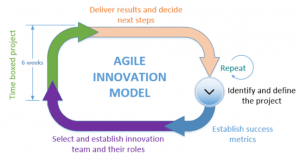Should your business consider moving to a cloud first strategy utilizing Microsoft’s Azure? The benefits of the cloud are now well documented, but there are several key value-adds that often go unaccounted for when analyzing the ROI of moving to the cloud. Companies considering an Azure cloud migration should take a moment to become well informed concerning all benefits Azure provides to an organization. There are numerous, almost hidden advantages that will have lasting positive effects.
Also read: 5 Steps to Take Before Migrating Your Apps to Azure
This will be the first of several posts which go deeper into these “hidden” and very valuable benefits which are realized by organizations that have made the move to Azure.
- Innovation
- Disaster Recovery and Business Continuity
- Scalability and Elasticity
- Security
- Modernization
Innovation through Azure cloud migration
The lifeblood of any organization is innovation. When innovation is stifled, the struggle to keep up with competitors becomes monumental. Employees disengage, vendors get frustrated, and customers start looking elsewhere. The question becomes how do we innovate when resources are at capacity?
Enter the Azure Cloud.
All the typical barriers, which previously kept you from innovation, can be removed or reduced by utilizing the cloud. Below is a listing of items that make the transition to Azure attractive and help to reduce your risk and increase business opportunity.
- Low-cost entry point
- Ease of use
- Familiar tooling
- Fast team ramp up
- Try before you buy
- Access to technology tools such as:
- Blockchain
- AI, Machine Learning, and predictive analytics
- Data analysis services and visualization
- Predefined analytics models
- Data warehouses and lakes
- IoT hubs and streaming real-time analytics
You likely know where to start innovating and already have a backlog of initiatives. Now challenge your technologists and architects to spend a portion of their day researching, discovering, and ideating for a given project or contact Quisitive to help you get started.
Agile Innovation Model (AIM)
Innovators understand process and how to move quickly but also realize that failing fast can reduce cost and free up valuable resources. The Agile Innovation Model has 5 easy steps and is recommended for most Proof of Concept (POC) projects because shorter cycles help to reduce risk.

- Identify and define a project
- Define success metrics
- Select and establish team roles
- Time box the project (under 6 weeks)
- Deliver results and decide next steps
Data
Many companies like to start their innovation journey with data as it contains a wealth of organizational knowledge and can quickly pay dividends in meaningful reports and dashboards. This is one area where Azure cloud is the undisputed champion. The expense of on-premises hardware, software, setup, and expertise inhibits companies from moving forward. In Azure, you configure a few settings and the data warehouse, analysis services, and data factory (data import) are ready for use allowing your team to focus on leveraging data for business innovation rather than spending time on all the on-premises setup and management.
There are many other use cases where the above pattern also works well including:
- Take one problematic business application and move it to Azure App Services
- Get rid of costly SQL licenses by moving your on-premises SQL Servers to Azure SQL
- Move selected low-risk VM workloads to Azure IaaS
Now your organization is transforming and positioning for the future. Employees are excited, vendors are happy, and you are on your way to being recognized as the industry leader in technological innovations.
In the next post of this series on The Hidden Value of Azure Cloud Migration, I’ll discuss how Azure can help you maintain business continuity through the worst disaster recovery scenarios.

;)



